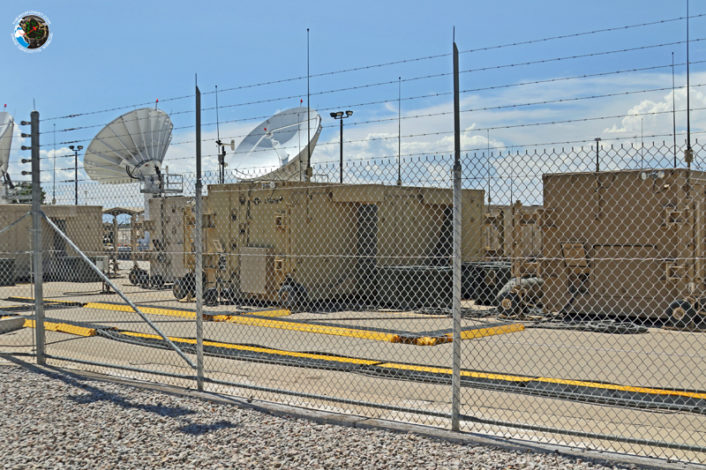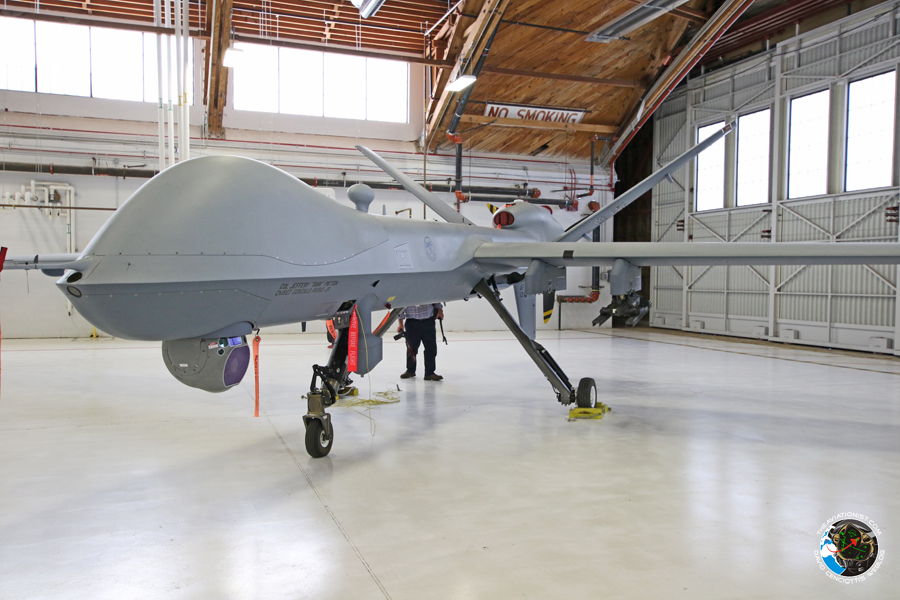We Went Inside USAF MQ-9 Reaper Training and Operations at Holloman AFB.
We never heard it. Out of the corner of my eye in a cloudless, bright blue New Mexico desert sky I saw the glint of a reflection over our bus. I glanced outside again. Nothing. No sound. Nothing in the sky. Then the glint flashed again, and this time I spotted it. But it was too late. The Reaper was already upon us.
This was the first time I had seen a General Atomics MQ-9 Reaper combat aircraft in flight. The experience stands in stark contrast to the thunder of fast jets or the whine of turboprops. In fact, the quiet whirring of the little 900 horsepower Honeywell turboprop seemed oddly toy-like. It seemed that way, if it wasn’t powering one of the most effective combat aircraft in the U.S. arsenal.
Holloman AFB in New Mexico is home to the U.S. Air Force 49th Wing Remotely Piloted Aircraft squadrons. The units include the 6th, 9th and unique 29th Attack Squadrons of the 49th Wing. This is the primary school for teaching new pilots to fly the MQ-9 Reaper remotely piloted aircraft. The school provides initial qualification training for the two person aircrews that fly the Reaper. In fact the 49th Wing’s 29th Attack Squadron (ATKS) is reported to be the only complete training unit for MQ-9 Reaper aircrews in the U.S. Air Force. This distinction puts their capabilities in high demand.
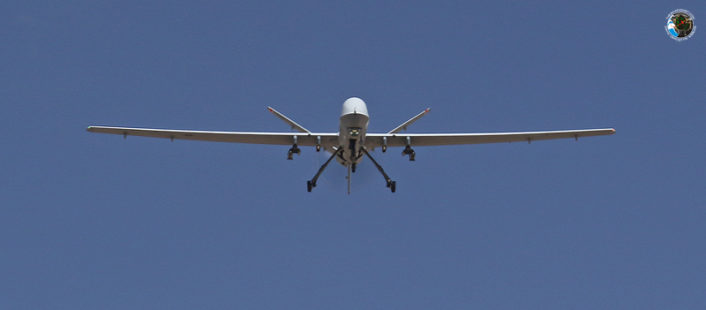
Remotely piloted aircraft have been the subject of misconceptions that are largely the result of fiction about “drones” or equipment that somehow spins out of human control. It is almost no more possible with a remotely piloted aircraft like the Reaper than it is with an onboard manned aircraft using a modern fly-by-wire flight control system.
There have been rare instances of adversaries jamming or supposedly taking control of remotely piloted aircraft, as with a December 2011 incident when the Iranian military managed to capture a U.S. RQ-170 Sentinel remotely piloted aircraft. But this incident is more of an anomaly than the risk of hijacks using a manned aircraft, as with the 9/11 terror attacks on the United States.
In fact, because security for the signal transmission that links the remotely piloted aircraft directly to its flight crew is codified and constantly improving, it is more likely that a onboard-manned aircraft can be hijacked than a remotely piloted aircraft. Remotely piloted aircraft can also be destroyed without risking the loss of flight crew, as was the case with an incident in September of 2009 in Afghanistan when U.S. combat aircraft destroyed a remotely piloted aircraft that suffered a rare control malfunction.
Last week TheAviationist.com gladly accepted a rare media invitation to see the RPA training operations at Holloman AFB in New Mexico. The school operates several versions of the General Atomics MQ-9 Predator aircraft primarily for training new Predator aircrews.
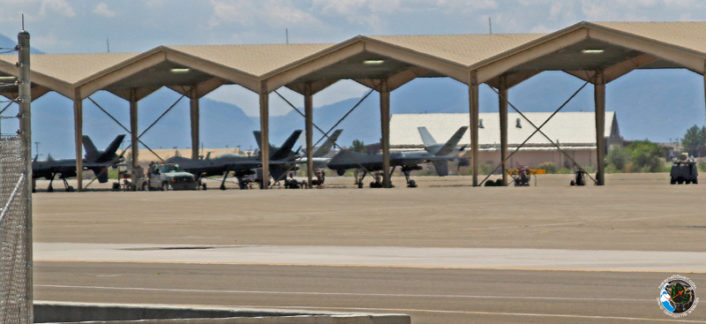
During our tour of the facility, aircrews wore opaque adhesive tape over their name badges for operational security. The missions these aircrews are training for are real world. One instructor related a mission when a new Predator pilot, after extensive training, was tasked with employing live weapons against actual operational targets in a conflict zone only 37 minutes after receiving their full qualification. That level of operational readiness is unprecedented in nearly all current tactical aviation.
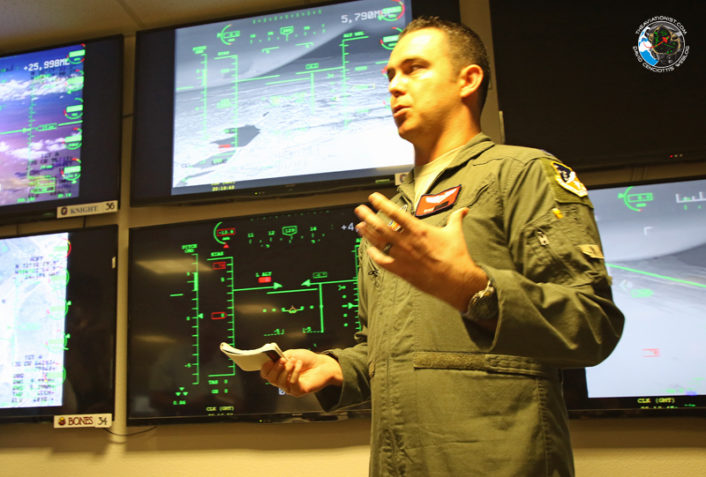
Predator operators and aircraft live behind additional layers of security within security in the remote New Mexico desert at Holloman. Because the nature of remotely operated combat aircraft reduces deployment time to near zero being in one of the control vans at Holloman was tantamount to standing on an operational forward airstrip in a conflict zone.
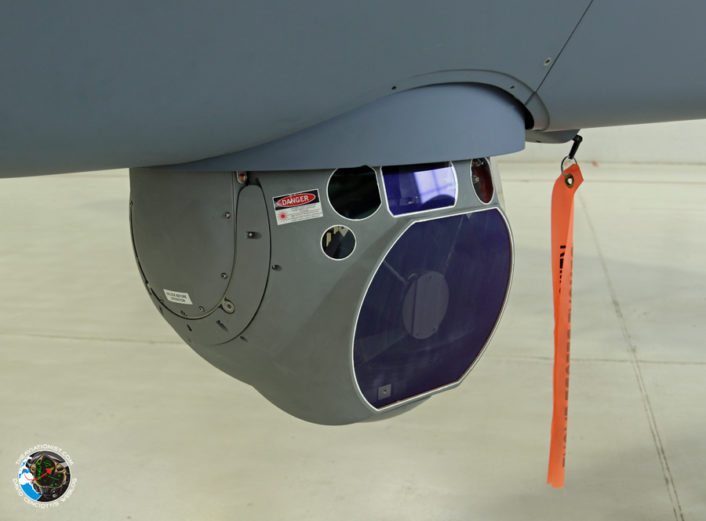
As we received our briefings the cockpit feed from optical sensors and flight control instruments on live aircraft in flight appeared on monitors. It looked like flying any light aircraft, whether it is a Cessna general aviation aircraft or a small, stealthy combat aircraft like the MQ-9 Predator. As we watched an MQ-9 practice landing approaches we could see the response to the pilot’s flight control inputs. These really are just another form of highly capable light combat aircraft.
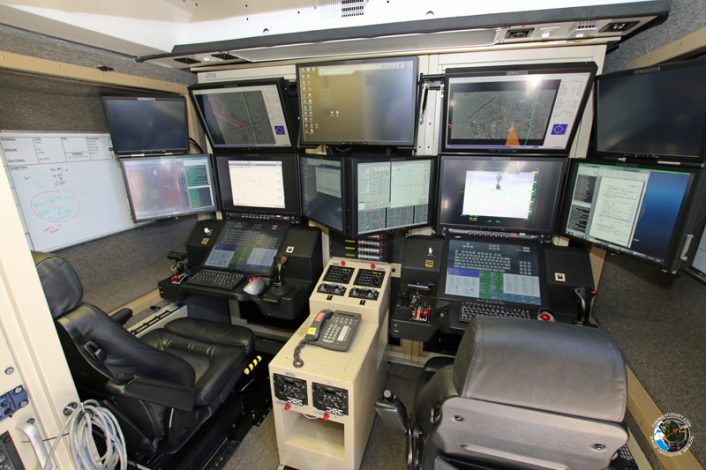
In March of 2017 the website Military.com reported that USAF Lt. Gen. Darryl Roberson told a media roundtable at the Air Force Association’s Air Warfare Symposium in Orlando, Florida that, “The U.S. Air Force now has more jobs for MQ-1 Predators and MQ-9 Reapers than any other type of pilot position.”
With the expansion of remotely piloted aircraft operations and the demand for aircrews to fly them it is reasonable to expect that the 49th Wing at Holloman will continue to be a very busy place.
